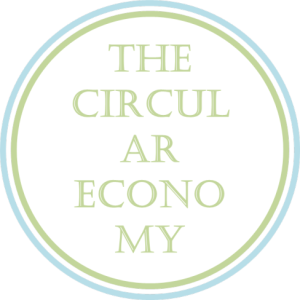Circular economy is booming when ‘take, make, faink’ is slowing down
 This is for the first time in the history of industrial economic development, green business ( blue economy) which looks at both biological and non biological feedback systems to be sustainable (cradle to cradle approach compatible with industrial ecology framework) seems to be doing much better than the linear, ‘take, make, faink (dispose)’ economy. During the last five years, circular economy generated 100 bn pounds of growth in UK while the rest of the economy was in dumps. What does it mean for India? We need to stop learning from the dominant industrial model which treats externality as a problem of government, society at large and even nature.
This is for the first time in the history of industrial economic development, green business ( blue economy) which looks at both biological and non biological feedback systems to be sustainable (cradle to cradle approach compatible with industrial ecology framework) seems to be doing much better than the linear, ‘take, make, faink (dispose)’ economy. During the last five years, circular economy generated 100 bn pounds of growth in UK while the rest of the economy was in dumps. What does it mean for India? We need to stop learning from the dominant industrial model which treats externality as a problem of government, society at large and even nature.
It is not surprising that grassroots innovations invariably use recycled parts in designing various solutions, and not surprisingly they fail to meet the regulator’s outdated parameters of certification. While talking at different fora recently, I made several suggestions which can give fillip to circular economy such as:
A. We should urgently take up the reform of regulatory and approval systems such as transport so that vehicles, farm machinery like santi, handiyo, and other improvements using old parts can be tested and approved for road worthiness. The same would apply to many other domains where second hand parts are used.
B. Imagine Indian economy without a distributed repair and service economy. No other country might get more out of any product or service than India. Yet, where are the skill development courses which focus on reduce, recycle, reuse, and what I call rejuvenation. Different components of any machine, say an airplane, fatigue at different rates and thus have different functional lifes. The airplane may be junked in about 25 years but the plane’s seat may have a life of two hundred years. Why should these chairs not be refurbished and sold as household furniture. This is what Lufthansa did. The policy implication is that different components should have a fatigue factor marked on them and there should be an actively induced rejuvenation policy of these long lasting components. Devices having second hand parts should be tested of course like any other device and then encouraged if found fit, which is likely.
C. There should be local, regional, national and global waste exchanges with all the characteristic properties and then awards announced for finding new applications for the same to reduce environmental complications. Platforms like Techpedia.in can play an active role.
D. Special funds should be created to invigorate a circular economy at decentralised level. It will help not only to generate environmentally positive outcomes but also to generate more enterprises and in turn jobs. Alongside the District Innovation Fund, we should create in each district, a social and environmental fund. If a government has money to subsidise food for wealthy people, they certainly have funds to promote social, environmental and economic start ups in each district.
E. Local language databases of used parts of different kind must be made available at each ICT kiosk and with mobile apps to every mobile user so that the circular economy can get a boost and right away.
F. The invigoration of the informal economy will take place in a big way when rural and semi-urban mechanics and roadside urban mechanics will know about a whole range of components available for reconstitution, reassembly, redesign and rejuvenation. The students of IITs and polytechnics can do tagging and characterisation of these components and make the databases more interactive and informative.
G. When economic conditions are tight, one has to invent new ways of creating opportunities for a whole new generation of entrepreneurs. These waste, component, tool and devices exchanges will fertilise the imagination of the younger generation. The India Inclusive Innovation Fund will of course ignore all such opportunities but hopefully some empathetic leaders in the public and private sector will see the potential of the circular economy.
H. Patents both live and expired, relating to these components and waste materials, will be pooled and used to annotate the entries in the databases.
I hope that the circular economy will forge new kinds of partnerships between formal and informal sectors and create new entrepreneurial pathways of socially inclusive development.
